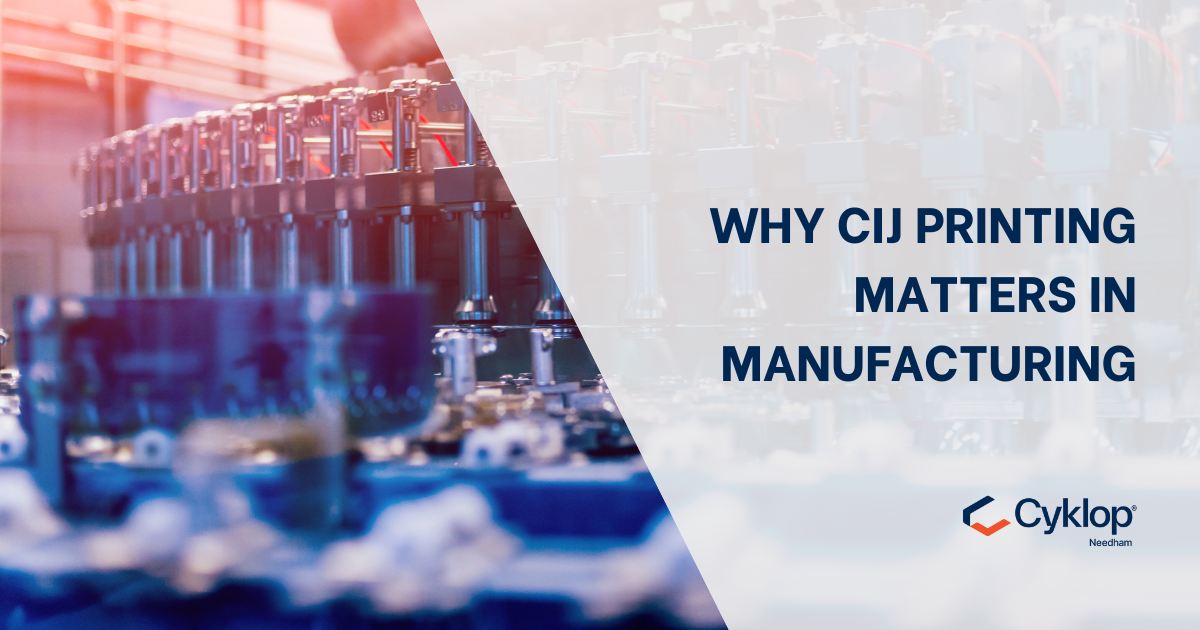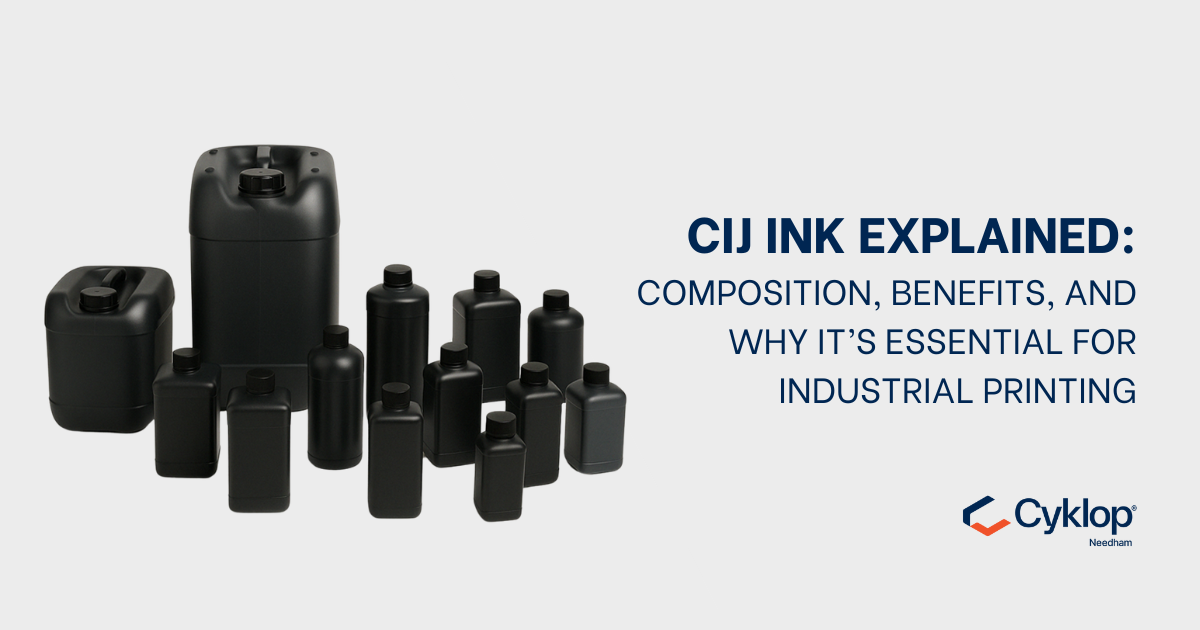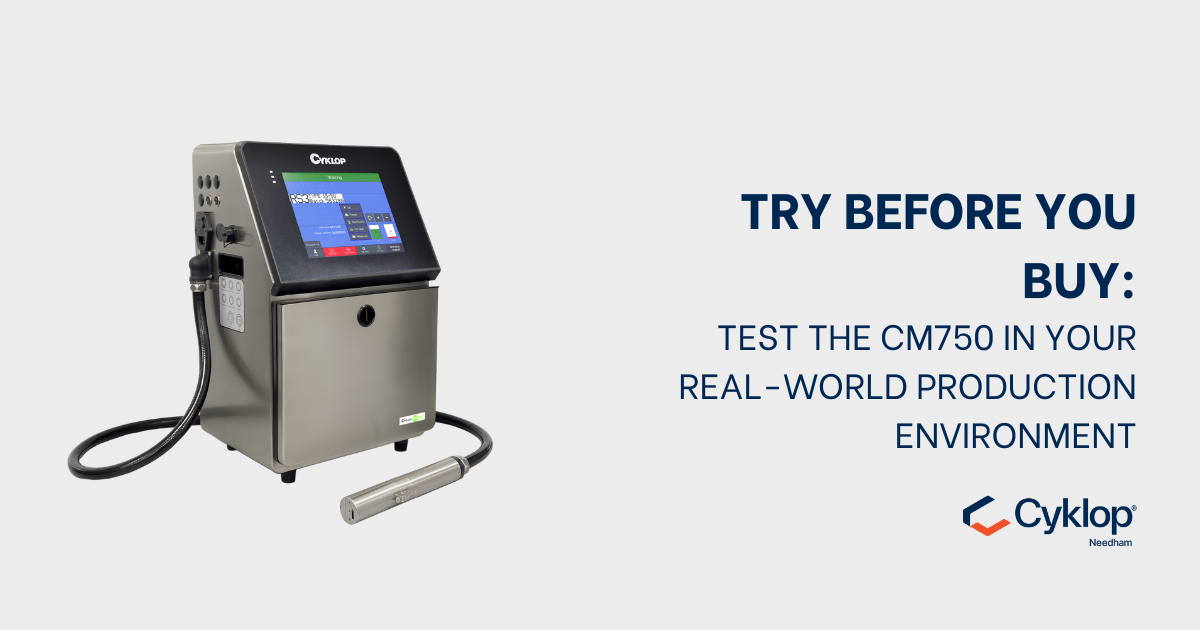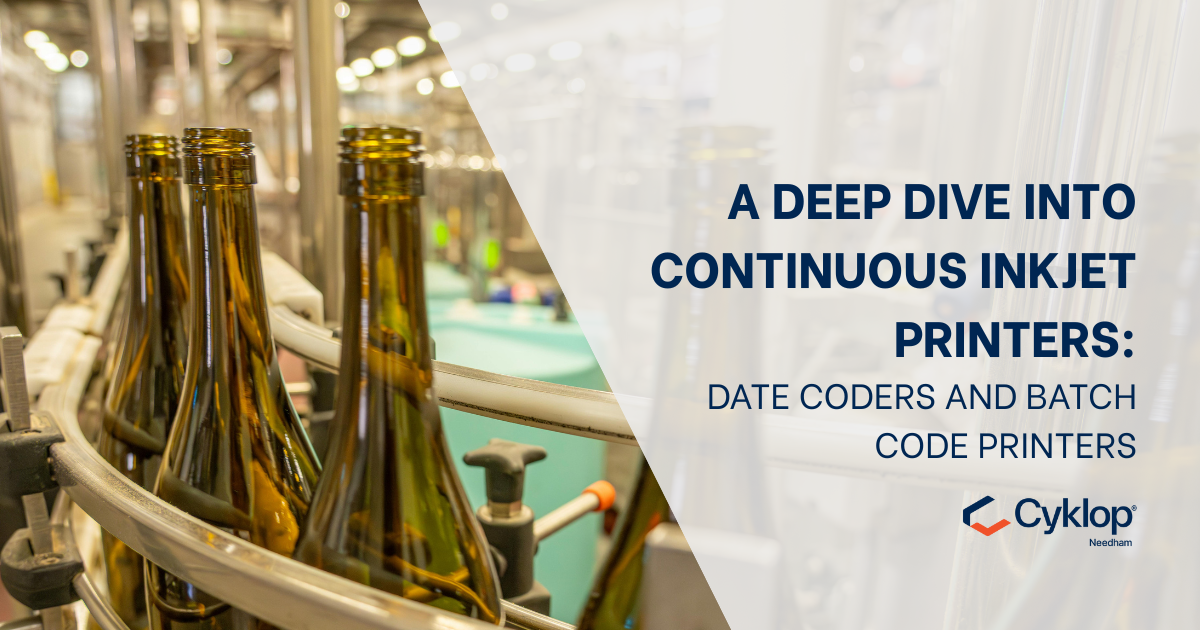CIJ Ink Explained: Composition, Benefits, and Why It’s Essential
Introduction: The Power Behind Continuous Inkjet Printing In the world of industrial printing, Continuous Inkjet (CIJ) technology stands as a pillar...

In today’s fast-paced manufacturing environment, efficiency, precision, and traceability are non-negotiable. One technology that continues to revolutionise industrial printing is Continuous Inkjet (CIJ) printing—a non-contact, high-speed solution that delivers consistent, permanent codes across a wide variety of substrates.
At Cyklop Needham, our CIJ printers, including the powerful CM750, are helping manufacturers around the world streamline their operations, meet regulatory standards, and enhance product traceability.
Continuous Inkjet (CIJ) printing is a non-contact coding method used to mark text, graphics, barcodes, and traceability information on materials like metal, glass, plastic, and cardboard—whether flat, curved, or flexible.
CIJ technology works by propelling ink droplets from a high-pressure printhead nozzle, directing them with electrostatic fields to form highly accurate, legible marks on moving products—making it ideal for high-speed, high-volume manufacturing.
Ink Reservoir: Circulates specially formulated ink for fast drying and durability
High-Pressure Pump: Pushes ink toward the nozzle for uninterrupted flow
Piezoelectric Crystal: Vibrates to break ink into controlled droplets
Charging Electrode: Charges selected droplets for deflection
Deflection Plates: Steer charged droplets to the substrate; uncharged ones are recycled
This continuous cycle results in seamless, high-speed printing that can be maintained for long production runs with minimal downtime.
CIJ printers apply batch numbers, expiry dates, and serial codes that help track products through every stage of the supply chain. This is crucial for recall readiness, regulatory compliance, and counterfeit prevention.
From food wrappers to pharma bottles, CIJ can print logos, barcodes, and variable data directly onto packaging materials—removing the need for external labels or stickers.
CIJ allows for unique, secure codes such as QR codes, 2D DataMatrix, and GS1-compliant markings to be printed at speed, enhancing both inventory control and brand protection.
Quickly apply inspection markers, such as dots or arrows, onto parts or components during assembly or testing.
Keep up with even the most demanding production schedules. CIJ printers like the CM750 can run 24/7 without interruption.
Print on nearly anything—glass, foil, metal, film, paper, rubber, wood—with excellent adhesion and clarity.
Perfect for fragile or curved surfaces, CIJ printing ensures precision without risking damage to products or packaging.
CIJ systems offer low ink consumption, reduced maintenance, and high uptime, delivering substantial ROI over time.
With over 60 years of expertise, Cyklop Needham is a trusted name in industrial printing solutions. Our CM750 CIJ printer is designed for:
Easy integration into existing production lines
Flexible coding options including text, graphics, dates, barcodes, and more
Wide ink compatibility, including food-grade, UV-readable, and solvent-resistant formulas
Reliable, long-lasting coding in even the harshest environments
We also offer OEM-compatible CIJ inks to help reduce ongoing operating costs without compromising print quality or compliance.
As manufacturing demands grow, Continuous Inkjet printing remains a critical tool for maintaining speed, quality, and traceability. From applying regulatory codes to supporting lean production lines, CIJ printers like the CM750 provide the performance, flexibility, and cost savings today’s manufacturers need.
📧 Email: enquiries@needham-ink.com
📞 Call: +44 (0)1948 662629
🌐 Visit: www.needham-ink.com


Introduction: The Power Behind Continuous Inkjet Printing In the world of industrial printing, Continuous Inkjet (CIJ) technology stands as a pillar...

Why a Free Trial Makes Sense for Your Business For businesses involved in packaging, labelling, or product coding, investing in the right printing...

Industrial Inkjet Printers: A Manufacturing Essential Industrial inkjet printers are designed to apply critical information—such as expiration dates,...